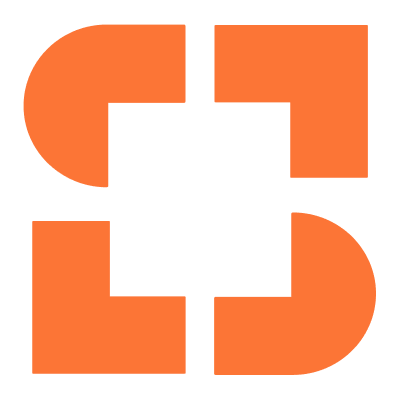Everyone expects a digital closing solution to have certain features, like document preview, eSigning, eNote, and eNotarization. These are the obvious things that you need to check off your list when evaluating eClosing platforms. There are some not-so-obvious capabilities and requirements that are critical to your success, which you also need to look for.
You might not immediately think to look for these things since their value isn’t apparent. However, the following six capabilities and requirements are incredibly important if you want to see ROI. Let’s break down each of these and how they enable lenders to scale digital closings and get business results.
Support for all types of closings and documents
To offer digital closings efficiently, you need to have a solution that handles all types of closings: wet closings, hybrid closings, and eClosings. If the solution only supports some closing types, you’ll be forced to manage multiple processes and systems. This creates confusion, slows down your team, and introduces opportunities for mistakes.
You also need to remember that lenders will manage a mix of closing types for years to come. There are still many parties that need to accept and adopt all the components that are required for an eClosing. Even when all industry stakeholders do support eClosings, borrowers will continue to have different technological preferences and proficiencies. Some will still want a wet or hybrid closing, so you need to be prepared to support all closing types.
The solution needs to support all types of documents too, including standard docs, custom docs, title docs, and security instruments. When you and your settlement partners aren’t able to upload, sort, and annotate all of your documents using the digital closing platform, you’ll also create multiple inefficient workflows. Not only will you end up frustrating and confusing your internal team, but also your settlement partners.
Ability to handle 100% of your volume
It isn’t enough for the digital closing technology to support all closing types. It also needs to be able to process 100% of your loan volume. Again, you don’t want to have multiple closing processes, since they’re an operational headache for everyone. Closing all of your loans through a single solution gives your team a standardized workflow that they can follow for every transaction. This eliminates any decisions they have to make when determining the steps they need to take for each type of closing.
Having a digital closing solution that can support all of your volume also means you aren’t limited to doing only a certain number of hybrid closings or eClosings. Digital closing providers shouldn’t place a cap on the number of digital closings you can do through them. Otherwise, you won’t be able to get the operational efficiencies that only come from doing digital closings at scale.
Customizable eSign policy
Some digital closing solutions only allow borrowers to eSign the same day of their closing appointment. By limiting when borrowers can eSign non-notarized documents, only 60% of borrowers eSign. However, when lenders lift this restriction so borrowers can eSign days before the closing, up to 90% of borrowers eSign. This is because borrowers have more time to complete the eSigning, which increases how likely they are to do so.
Seventy-five percent of a typical closing package can be eSigned by borrowers. By getting them to eSign those documents before their closing appointment, you’ll reduce the amount of activities that need to happen at the closing table. When there’s less business to take care of during the closing appointment, borrowers enjoy a quick and efficient closing that’s 15 minutes or less.
Lenders are often concerned about allowing borrowers to eSign documents before the day of their closing. Rajasekhar Penugonda, eMortgage Program Lead at Freddie Mac, confirmed that lenders can have borrowers eSign some documents ahead of the closing date:
"If the lender wants to have the borrower eSign some of the documents ahead of the closing date, they can do so. … The two key requirements are notarized documents need to be signed in front of a notary — virtual or physical — and the note date has to be correctly referenced in the security instrument, regardless of when the documents are signed."
As long as you meet those two requirements, investors should accept the documents. Some investors will continue to require same-day eSigning. If possible though, you should give borrowers some flexibility on when they can eSign and your digital closing technology should support that.
Automated document sorting and tagging
While you can manually sort and annotate documents, it’s a lot of extra work that at least one or more people will have to do. Some digital closing providers have semi-automated templates. You can set up templates that will automatically apply eSignature fields to your documents.
As The Mortgage Firm experienced though, templates create more work and headaches than they’re worth. Sheri Nedley, SVP of Loan Operations at The Mortgage Firm, described, “I’d have to build out a template for at least six types of packages for every state. It was ridiculously cumbersome.”
This is why your eClosing platform should completely automate document sorting and tagging. The best technology will not only tag eSignature and eNotarization fields, but it’ll also tag radio dials, open text fields, and dynamic fields. It will even tag both lender and title documents, removing this additional work off of both parties’ plates.
When document sorting and tagging is automated, it makes it easy to do digital closings at scale. Otherwise, preparing documents for hundreds or thousands of digital closings is going to consume a lot of your time and resources.
Adoption among settlement and notaries
Lack of settlement adoption prevents many lenders from scaling digital closings. When the digital closing technology is already adopted by settlement companies though, you’ll be able to smoothly roll out digital closings across your entire business. Settlement agents are already familiar with the technology and workflow, so you won’t need to do the hard work of persuading them to use a new system and change their way of doing things. This is particularly valuable when you aren’t able to choose the settlement agent on a closing.
When digital closing technology is adopted by thousands of notaries across the country, you can conduct both remote online notarization (RON) eClosings and mobile closings. With extensive notary coverage across all the markets you serve, you’ll be able to offer a remote closing whenever borrowers want one.
Notary adoption even benefits your settlement partners. They can easily find and schedule a notary for any type of closing, without having to leave the digital closing platform.
Successful customers
It’s important to partner with a digital closing provider who has a track record of success. There are many tech companies that are figuring out digital closings, but haven’t quite cracked it yet or don’t fully understand the challenges that have prevented industry-wide adoption. As a result, their lender customers never go beyond doing a few hybrid closings or eClosings.
Partnering with a provider who has consistently helped lenders close 70% or more of their loans as hybrids or eClosings will drastically increase your chances of success. The provider will have a repeatable process for helping you achieve similar results and can confidently guide you through any problems you run into.
These six requirements are some of the most important ones that you should make sure an eClosing platform meets. It doesn’t end here though. There are many other tools and qualities that are important to have. Get the complete list of what to look for in digital closing technology by downloading our free “A Lender’s Guide to Choosing the Right Digital Closing Solution” eBook.






